One of the reasons Malaysians visit famous volcanoes such as Mount Fuji and Mount Bromo is they’ve never seen a volcano, and they think that there is no volcano in Malaysia. Wrong! Sabah has over 10 volcanoes, for example, Bohey Dulang Island, Bukit Tengkorak, Mount Wullersdorf. Tawau and Semporna in south-east of Sabah were used to be the volcanic regions from Neogene to Late Pleistocene ages (about 23 million to 11,700 years ago).
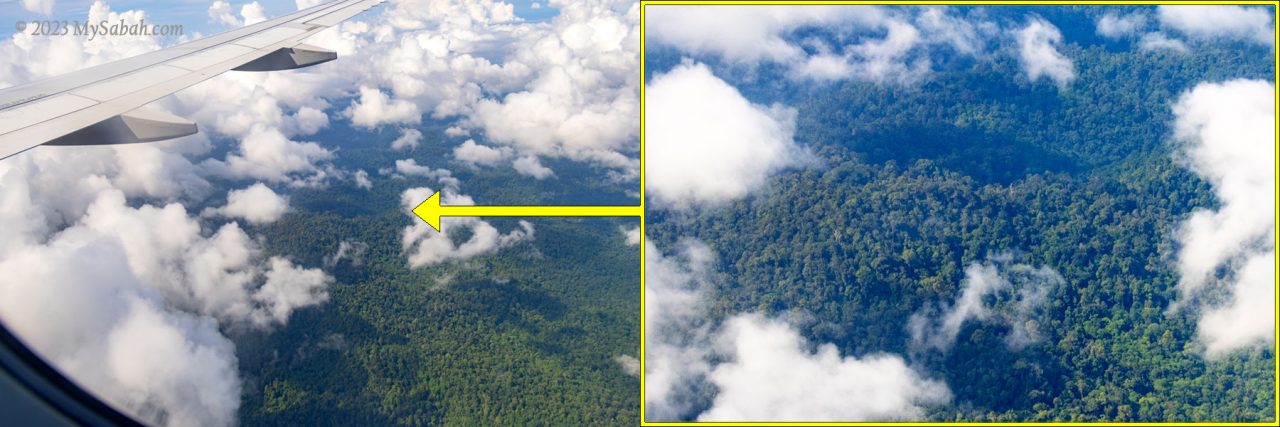
Don’t worry. All volcanoes in Sabah are extinct (or dead) volcano, which will not erupt anymore. Don’t believe those viral videos which clickbait us by saying that the Bombalai Hill of Sabah is an active or dormant volcano. Some local school teachers tell their students that Mount Kinabalu is a volcano, this is incorrect too.
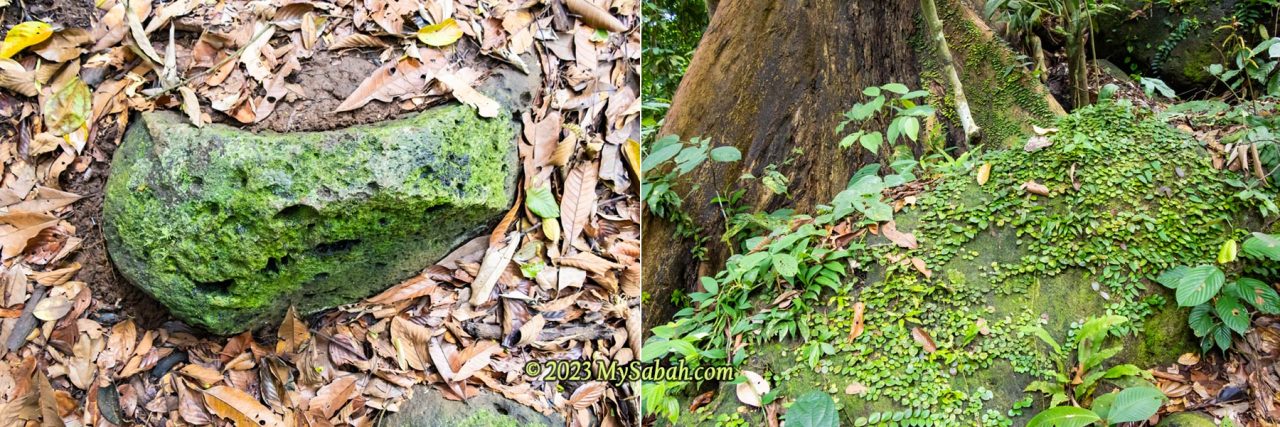
About Bombalai Hill (Bukit Bombalai)
Bombalai Hill (Bukit Bombalai in Malay language) is the most accessible extinct volcano in Sabah. You can park your car near its foothill and hike only an hour to its peak. Though a dead volcano is not as interesting as a smoking active volcano with flowing lava, it is definitely safer to explore.
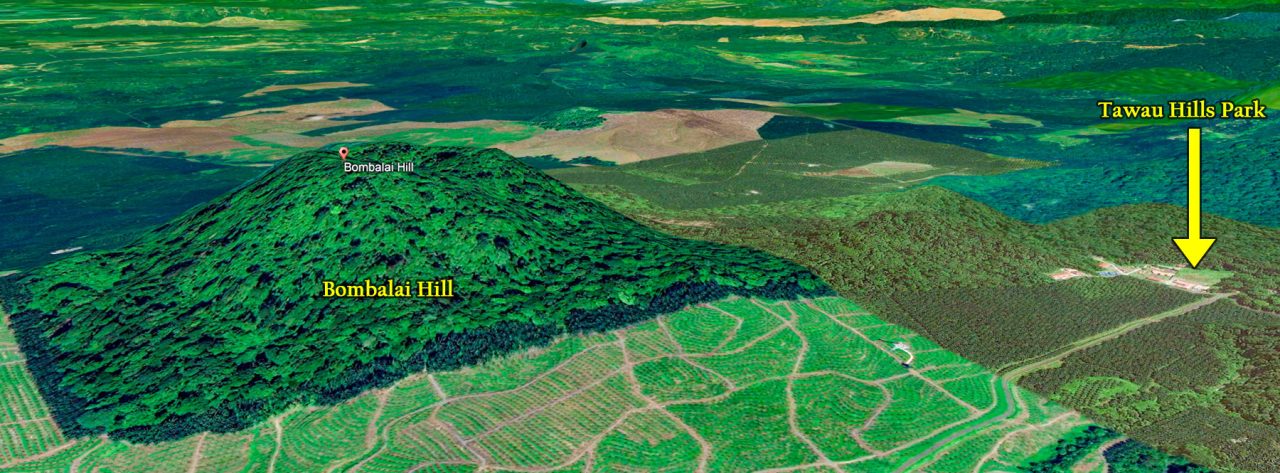
Bombalai Hill is an ancient cone volcano that was active during Quaternary. Its last eruption is probably about 129,000 to 11,700 years ago. Though the dense forest on the hill has covered the traces of volcanism, its 300-metre-wide caldera is quite visible from the sky. I saw it once from a plane that flied to Tawau town, the third largest town of Sabah.
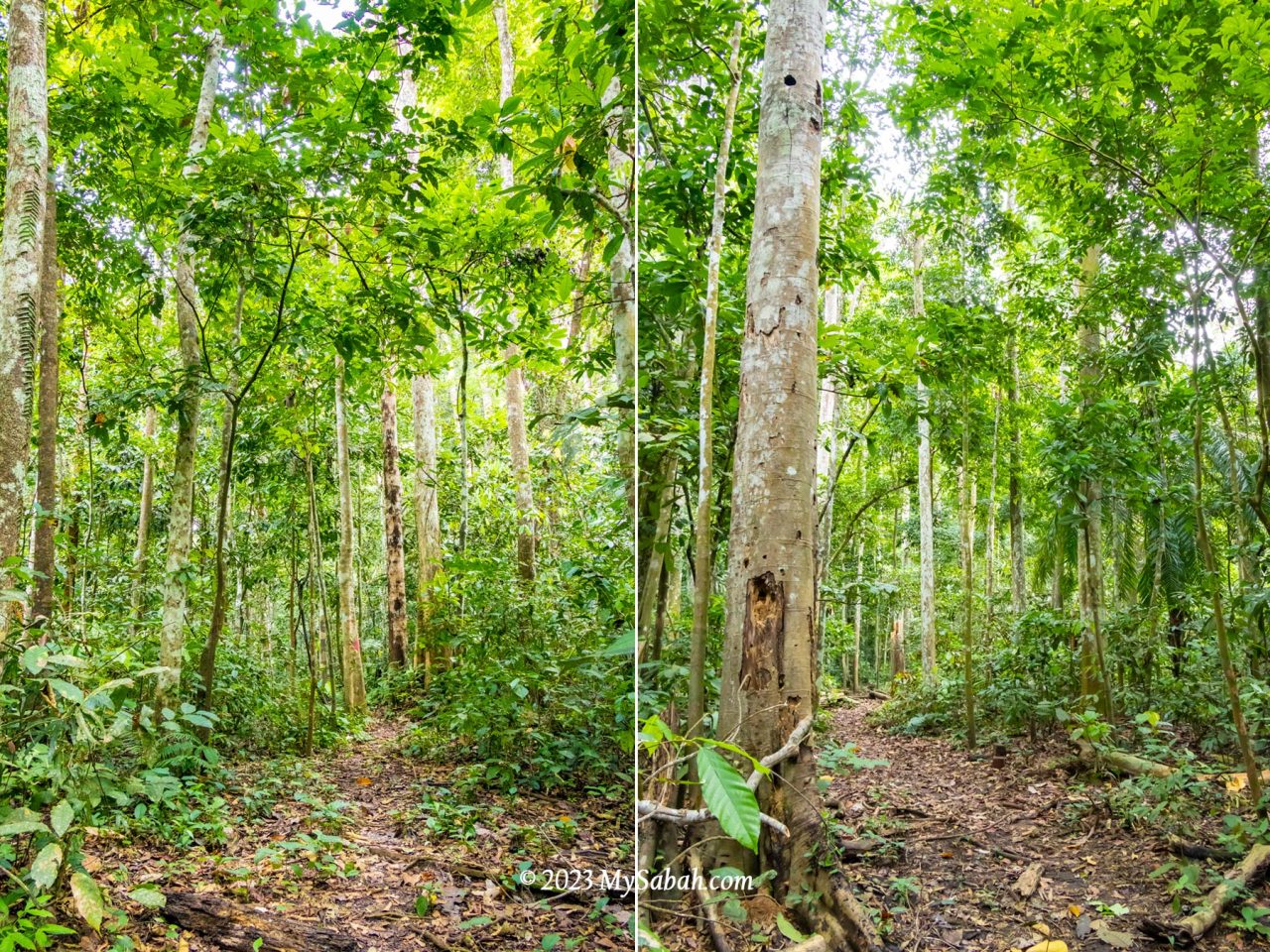
Bombalai Hill is part of Tawau Hills Park (Taman Bukit Tawau), a fully protected forest reserve about 24 km north-west of Tawau (see Location Map) and highly accessible by sealed roads. If Tawau Hills Park is open a million years ago, it would be called “Tawau Volcanoes Park” because the mountains there were used to be active volcanoes from the ages of Miocene to Late Pleistocene.
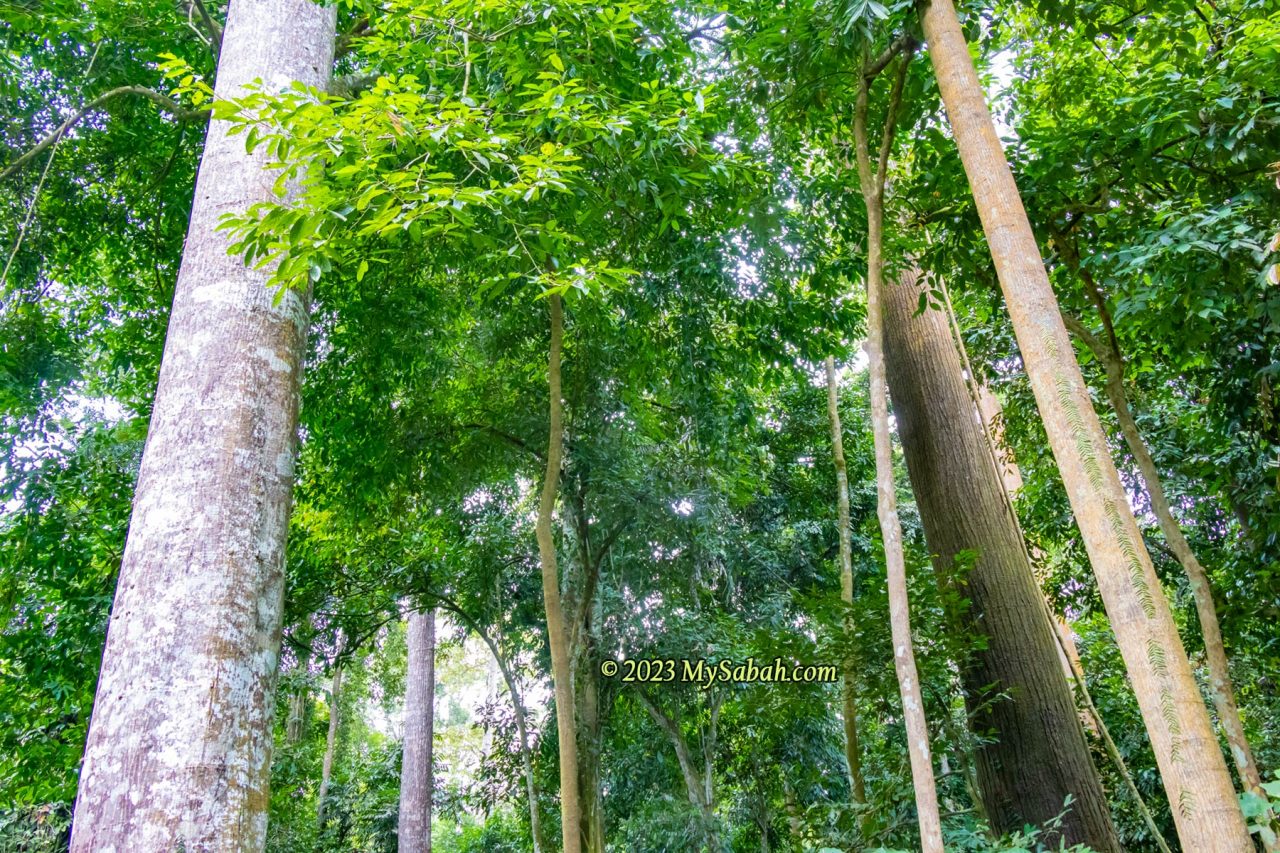
Now these extinct volcanoes become the three highest mountains in Tawau Hills Park, namely, Mount Magdalena (1,310 M), Mount Lucia (1,201 M) and Mount Maria (1,083 M). Mount Lucia has the most distinct volcano crater on the peak and it takes 6 hours to hike, but I climb Bombalai Hill first, because it’s the smaller volcano with the shortest and easiest trail.
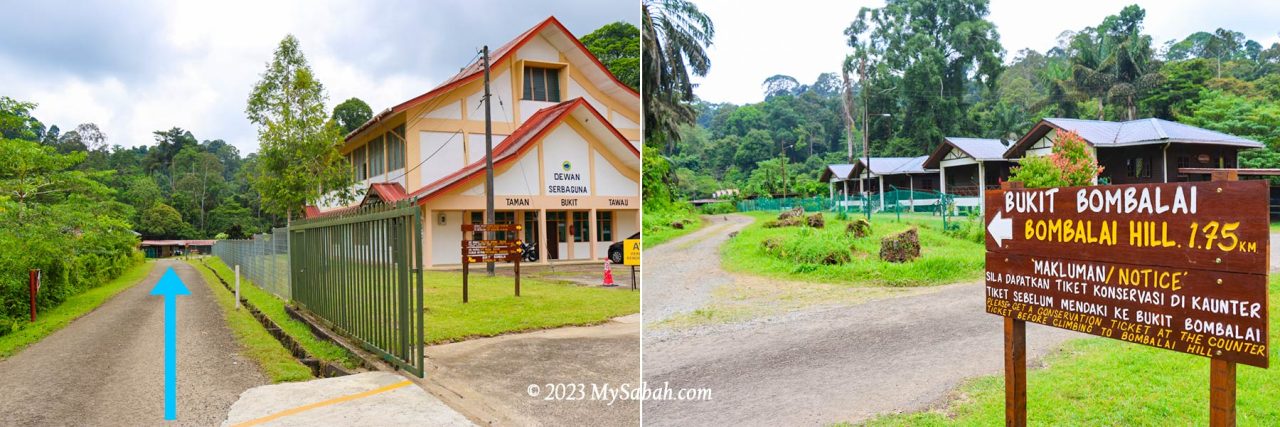
Tawau Hills Park opens from 8am to 4pm every day. You can climb Bombalai Hill during the opening hours but I advise you to start before 2pm. Because the dense forest is quite dim after 3pm, when the sun starts sinking behind the hill. You are not required to hire a guide to go with you.
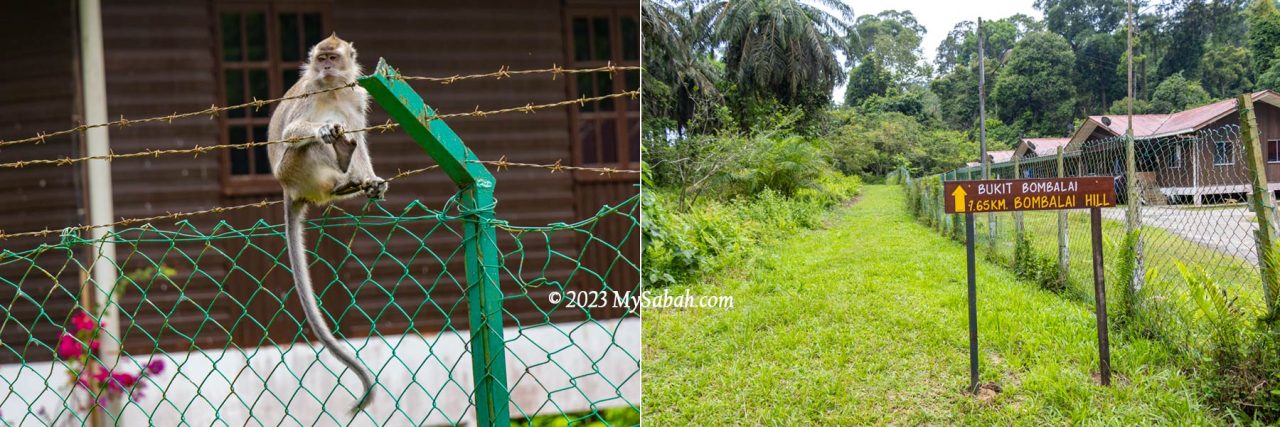
Climbing Bombalai Hill
The starting point is located outside the fenced area of Tawau Hills Park headquarter. The ticket (named as Conservation Fee) costs RM6 for Malaysian adult (18 years old & above) and RM20 for foreign adult (as of year 2023). Some “smart” people would ask you to bypass the ticket counter so you can climb the hill for free. Please don’t do that. In case you are stranded on the hill, nobody would know that you are on the hill. Or you would be mistaken as a poacher by the patrolling rangers there.
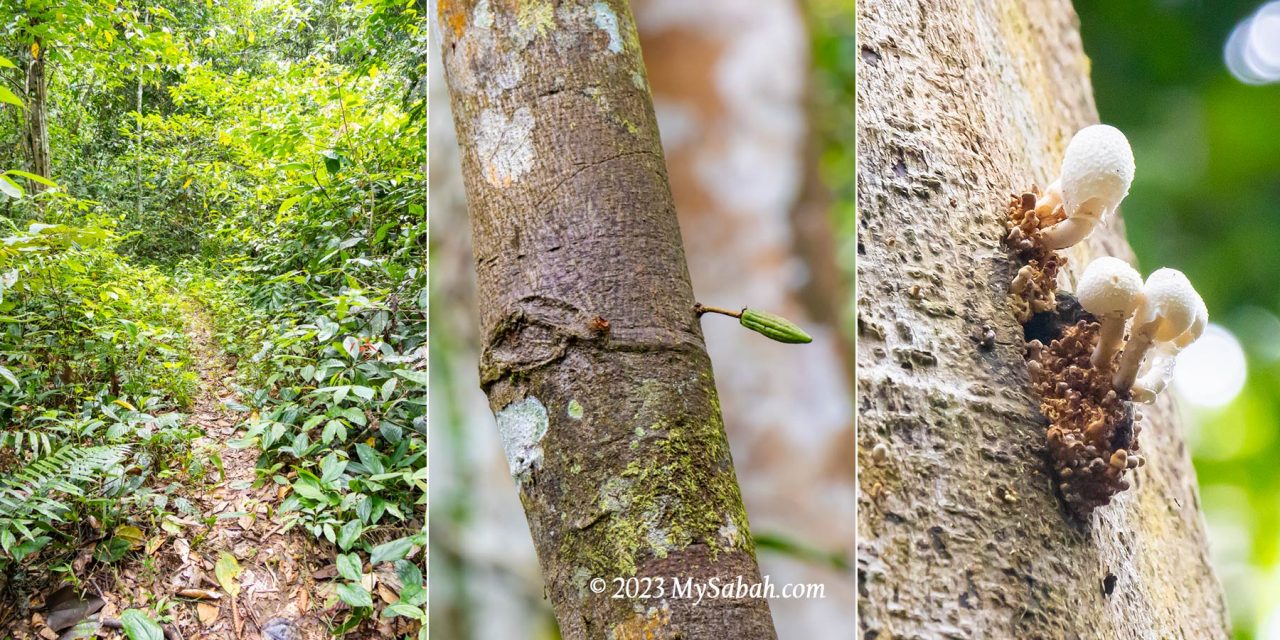
Though Bombalai Hill is 530 metres above sea level, the hike begins on a higher ground of nearly 300 metres above sea level, so I only need to climb up about 230 metres. The trail to the peak of Bombalai Hill is about 1.9 kilometres one way. Normally it takes about an hour to reach the top. Overall, the climb is not tough, even beginners can do it. Wear a pair of anti-leech socks if you’re afraid of leech bite.
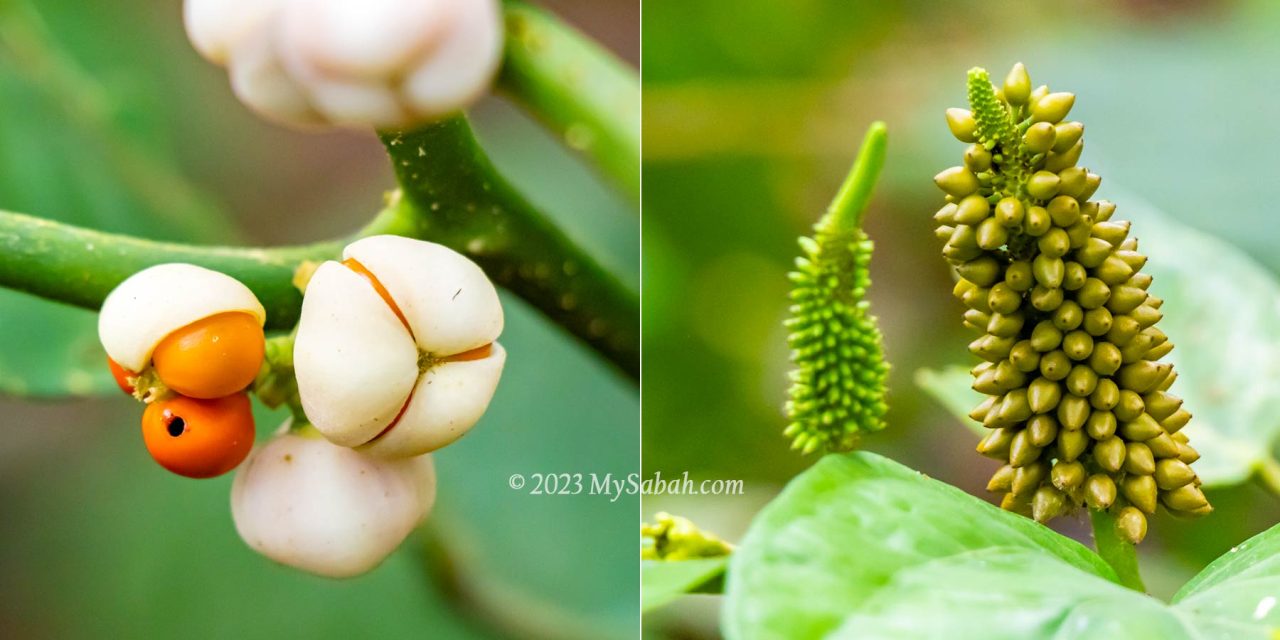
When you face the front of the park entrance, turn left and walk 150 metres, from car park to the end of the paved road until you reach the building of staff accommodation. You will see a signage to Bombalai Hill, which points to a straight, wide and flat gravel and grass path next to an oil palm plantation.
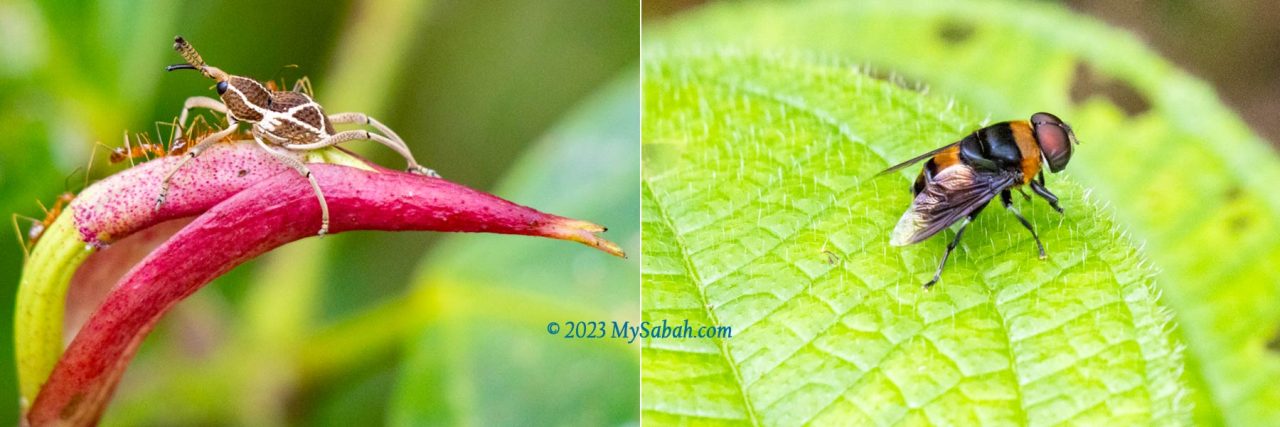
Just follow the grass path for less than 10 minutes, you will enter a forest edge with narrow soil trail with bushy sides. You should see a signage that says “Ke Puncak Bukit Bombalai”, which is translated as “To the Peak of Bombalai Hill.” (Bukit means Hill in Malay language)
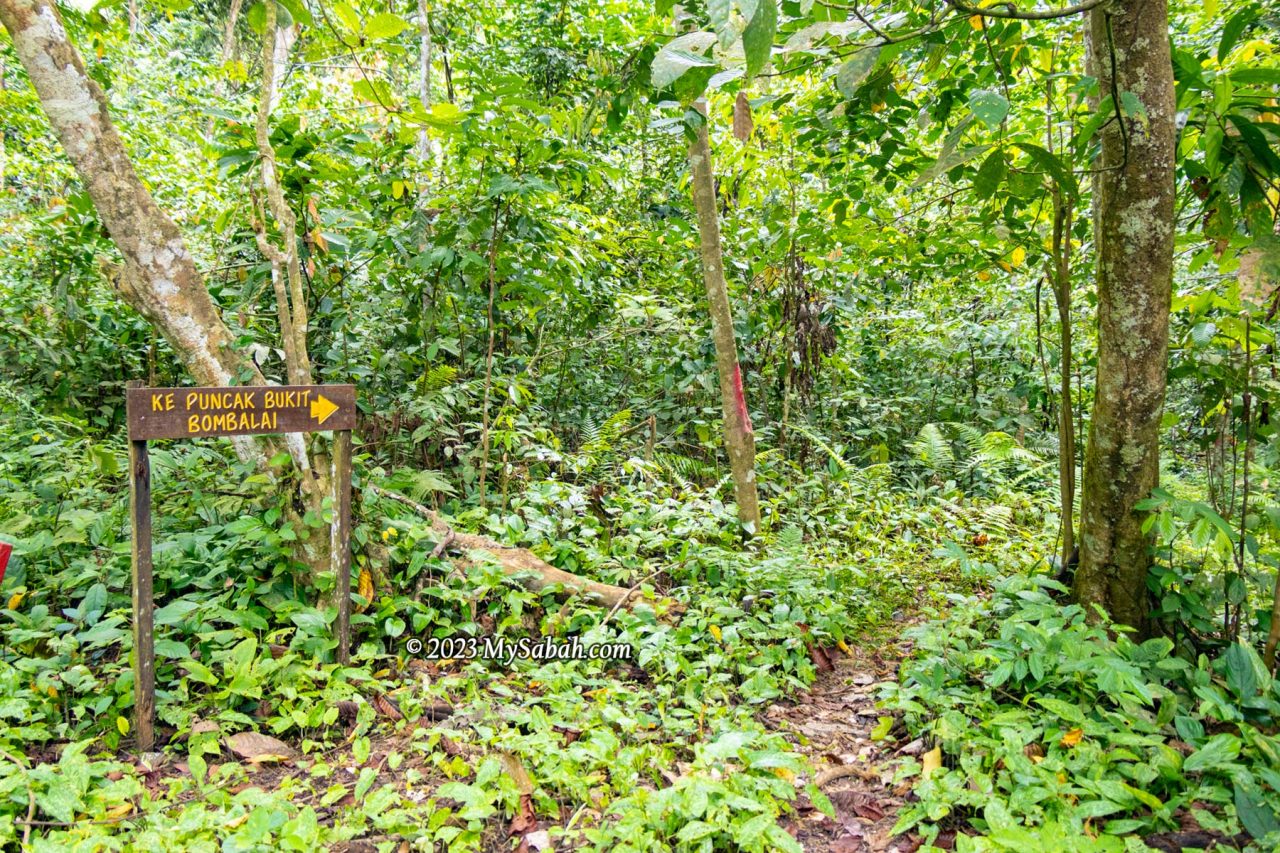
Due to the tree shades, the surrounding is darker and the trail is flanked by dense undergrowth. Walk slowly and scan around, you would find many fruits, herb plants and flowers, e.g. ginger, orchid, begonia, among them. A couple of leeches would welcome you.
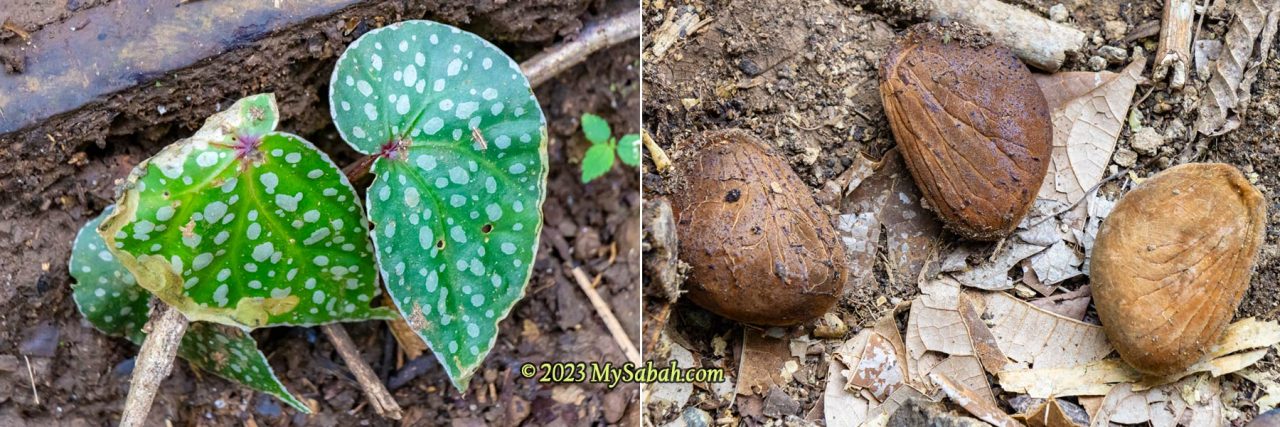
The lush rainforest covers all the traces of volcanism. This forested dead volcano is actually a green volcano full of lives. The cicada orchestra and bird calls never stop. My presence causes some commotion among the elusive tree-dwelling primates.
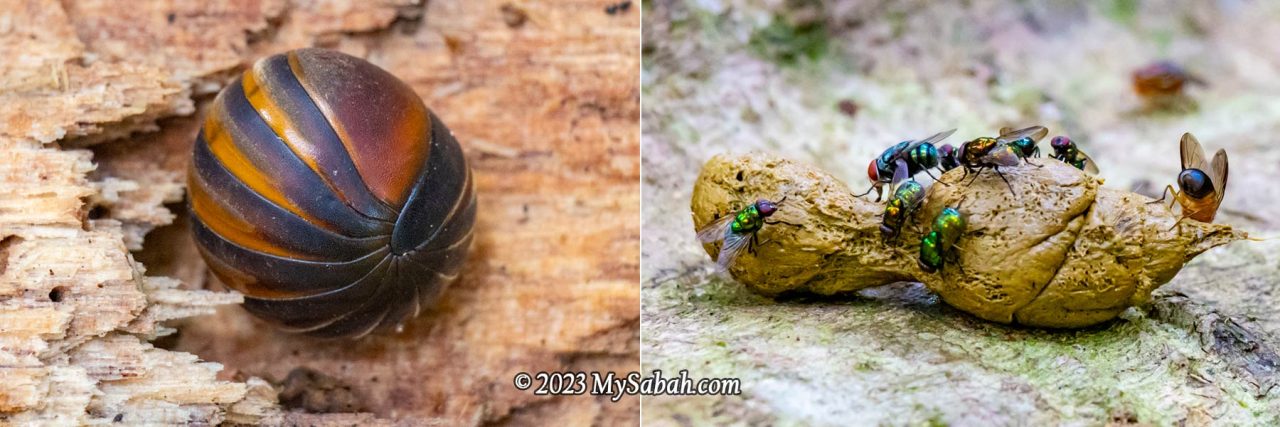
The eight species of primate found in this park are long-tailed macaque, pig-tailed macaque, red-leaf monkey, Borneo gibbons, orang-utans, tarsiers, slow loris and Gray-leaf Monkey. They flee before I can tell what they are, but very likely they are either macaques or red-leaf monkey.
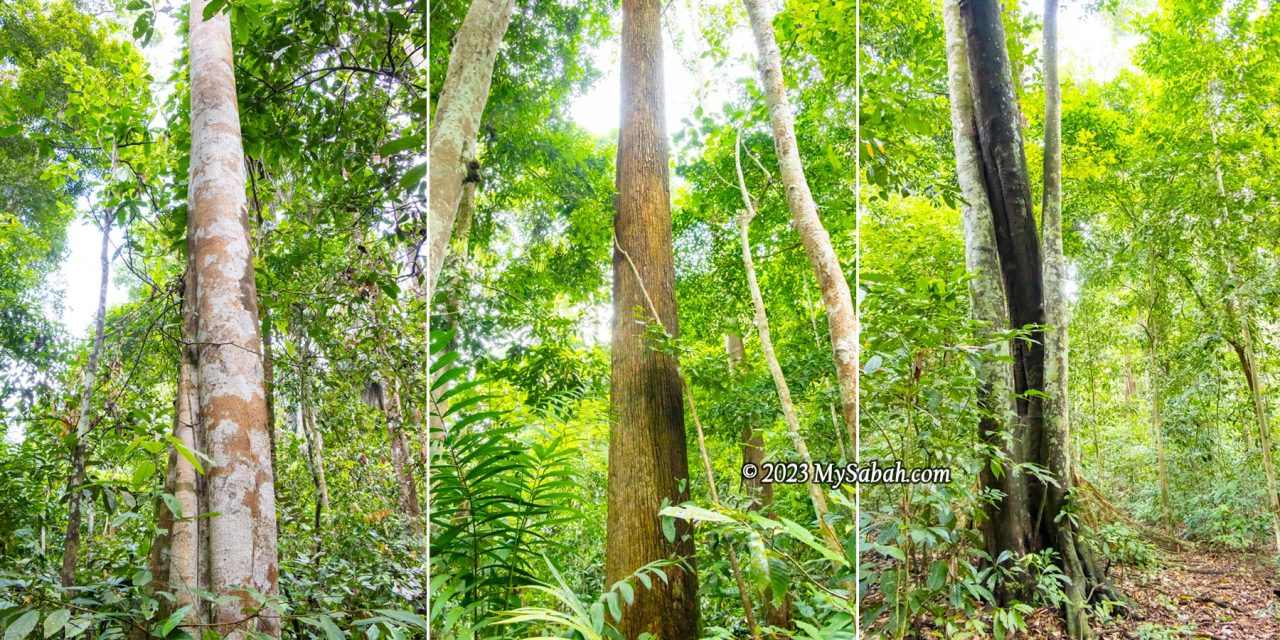
Tawau Hills Park is also a popular bird-watching site. I can hear the hoarse call and flapping wing of hornbills on the canopy. I recognise the calls of broadbill and pitta too. Of the 8 species of Hornbills known from Sabah, 6 species live here, namely, the Black, Bushy-crested, Helmeted, Rhinoceros, White-crowned and the Wreathed hornbills. Also, 3 species of the rare pheasants occur here, namely, Crested-fireback, Great argus and Malayan peacock pheasants.

The first 1 kilometre of the hike is mainly an easy walk on flat surface, with only a few gentle slopes. The distance markers every 100 metres are the progress bars that keep me motivated. I’m the only climber on the hill, but I don’t feel lonely in nature. I don’t worry about losing my way because the trail is well-trodden.
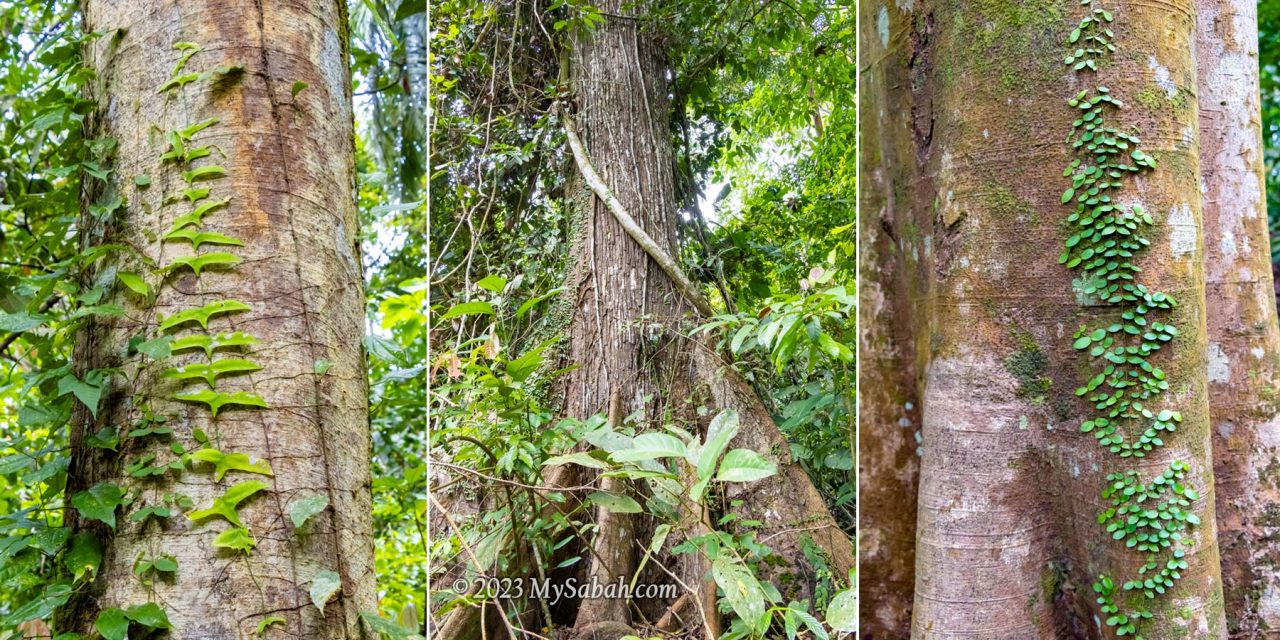
The foothill is mainly lowland and secondary forest. As I climb higher, I see variety of trees, vines, liana, and creepers of hill dipterocarp forest flourishing on the fertile volcanic soil. Unlike the monodominant forests in temperate countries, the vegetation of Borneo rainforest is highly diversified.
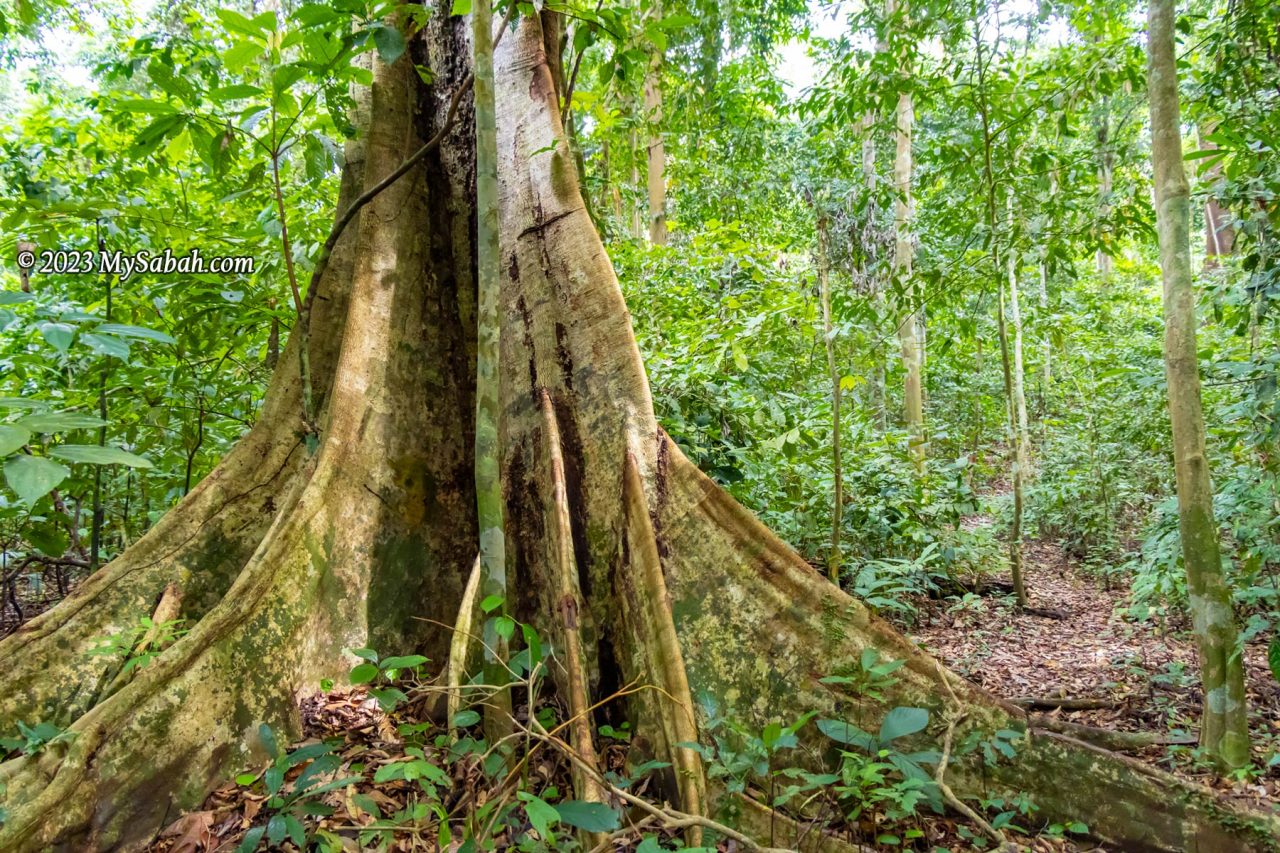
Reaching the Peak
The last 400 metres uphill trail to the peak is the most challenging part of the climb. There are some rope support at steep or slippery sections. About 100 metres before the ending point is a leisure walk on a ridge. It takes me 1.5 hour to reach the peak because I walk slowly to take pictures.
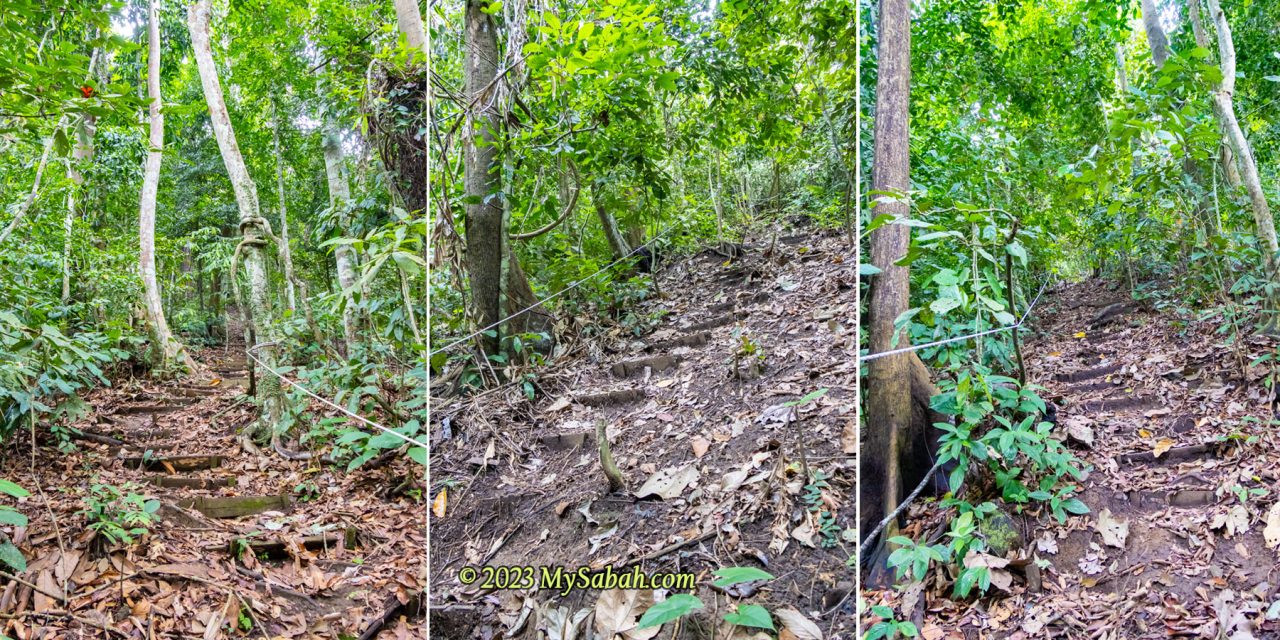
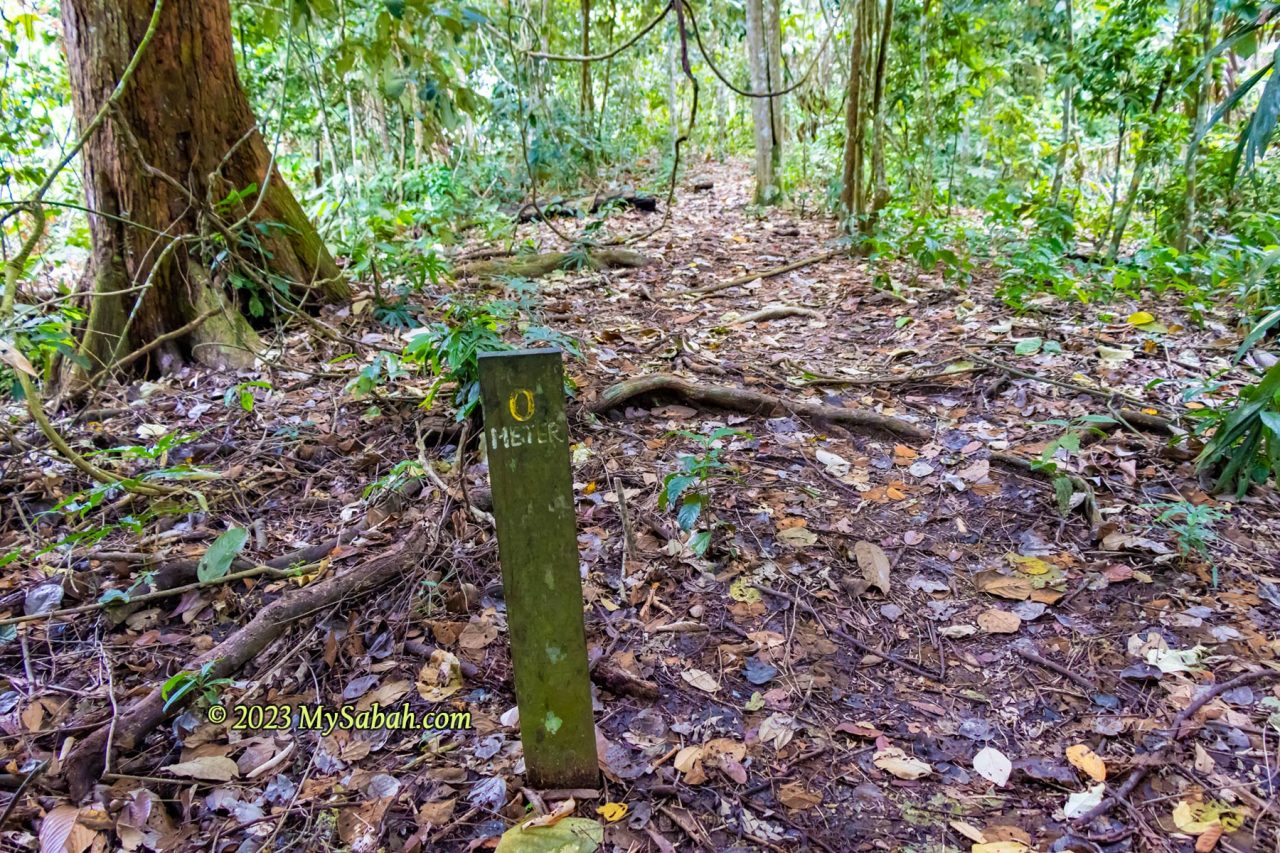
At the peak is a 2-level wooden viewpoint platform with an open view facing south-west. It’s a hazy day but I still can see oil palm plantation, Tawau plains, Sulawesi Sea, Sebatik Island, and other places more than 12 kilometres away.
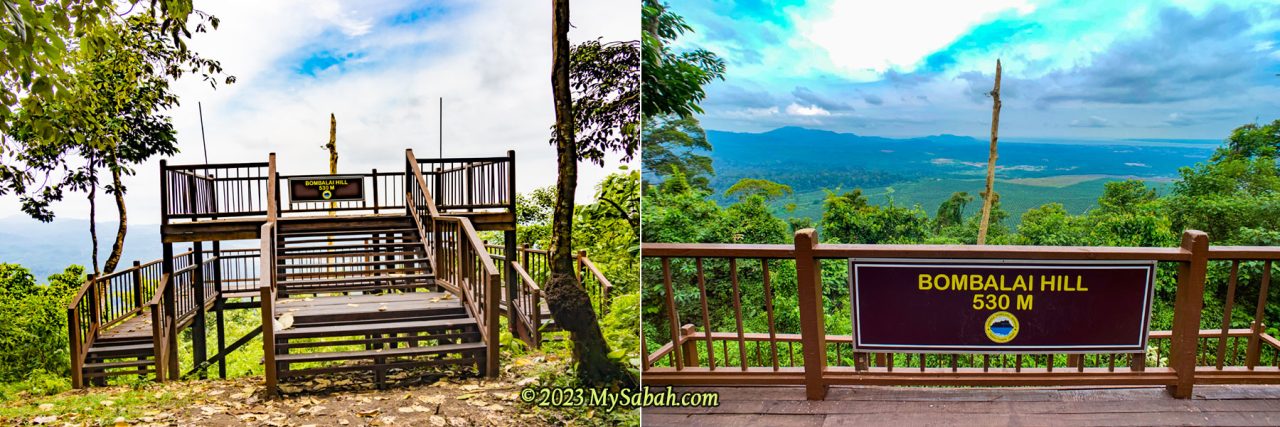
As Bombalai Hill is surrounded by oil palm plantation from three sides, to be honest the panoramic view on top isn’t really fantastic. Anyway, I feel wonderful and worthwhile conquering an ancient volcano.
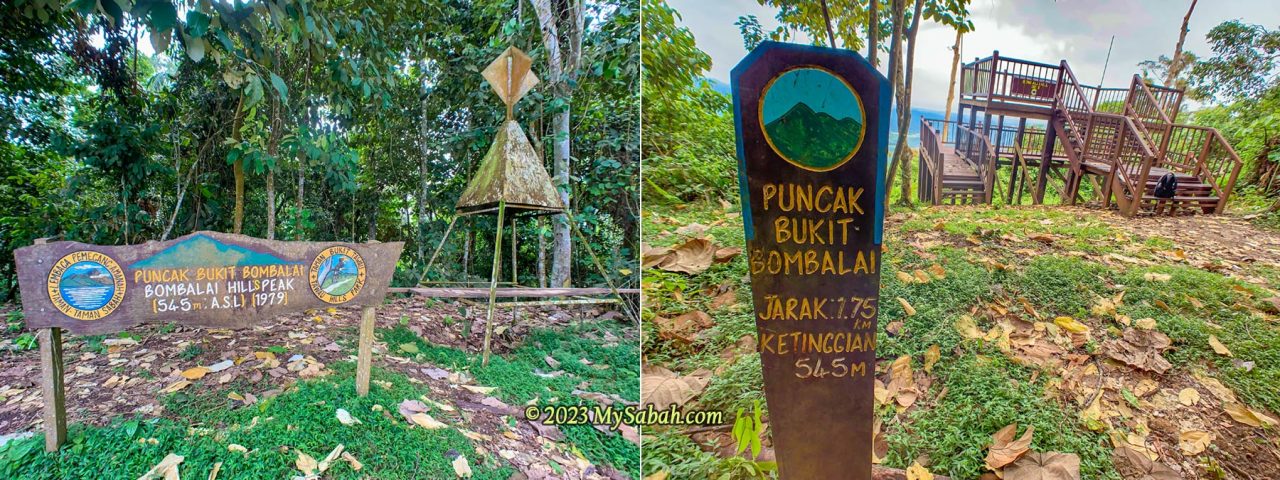
Just a trivia of Bombalai Hill. There is a secret cave used by the Japanese or resistance fighters during World War II at the peak of Bombalai Hill. Urban legends from all over the world say Japanese hide their war loot in caves and tunnels during WWII. Some treasure hunters believe this myth and excavate the site, though Sabah Parks has debunked that there is no gold.
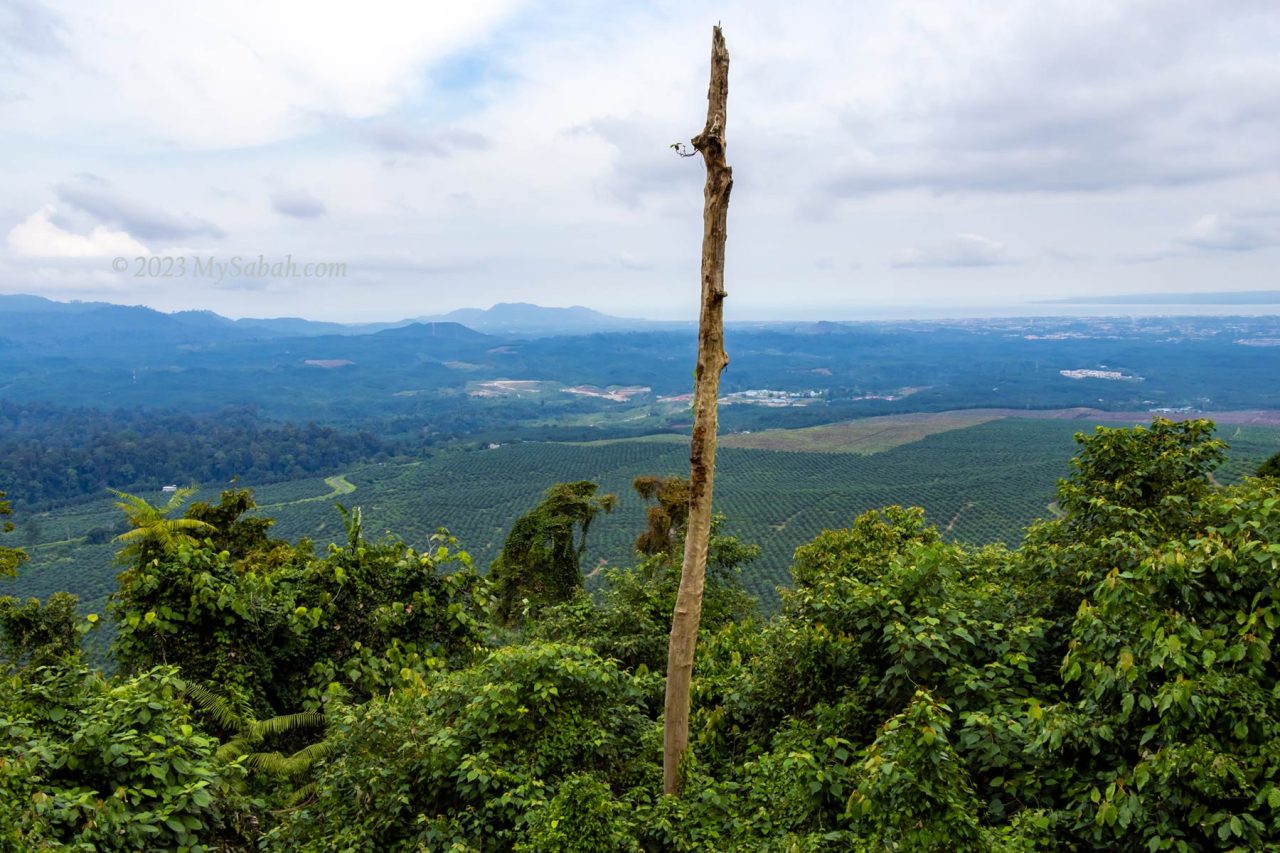
The north side of Bombalai Hill is connected to the main forest of Tawau Hills Park, so the wildlife aren’t stuck on an isolated hill. From the high density of the birds and monkey living there, they seem to like Bombalai Hill a lot.
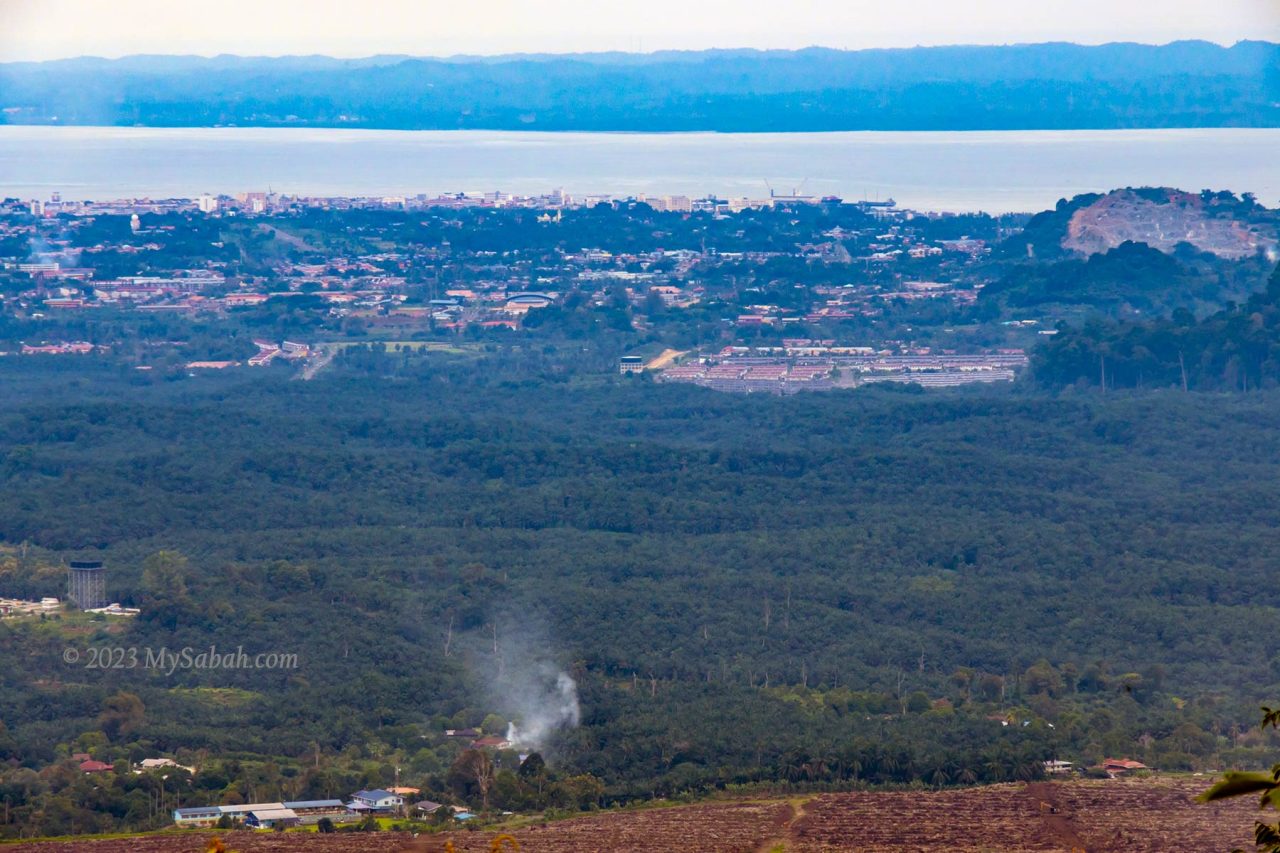
After the climb, don’t throw away your ticket. You can use it to enter the park headquarter (Tawau Hills Park) to take a dip in the river, visit the waterfall, sulphurous springs, botanical garden and one of tallest tropical tree in the world. The park also has toilet and canteen (Kantin Begonia) for visitors. For more information, you can contact Sabah Parks, the government agency that manages Tawau Hills Park.
Photos taken in Tawau, Sabah, Malaysia Borneo
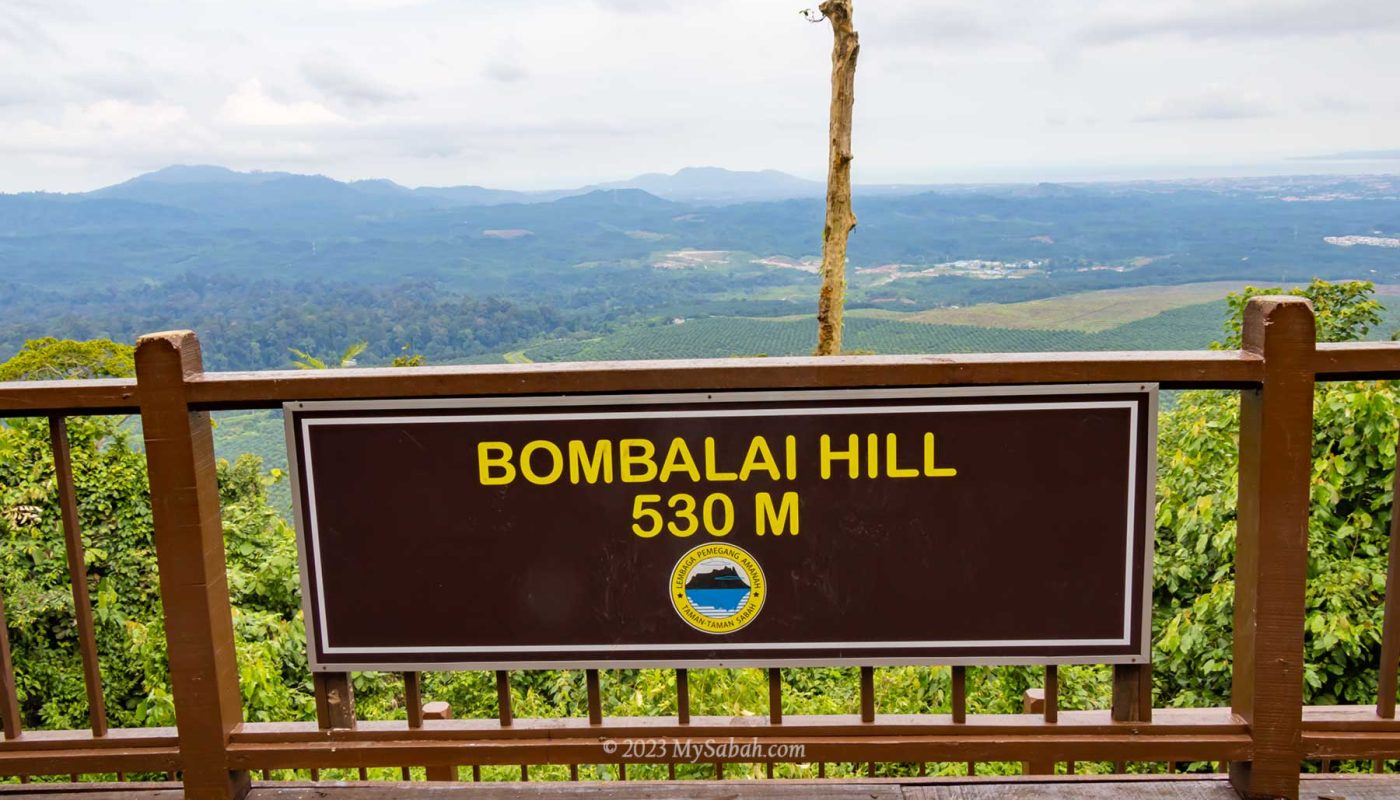


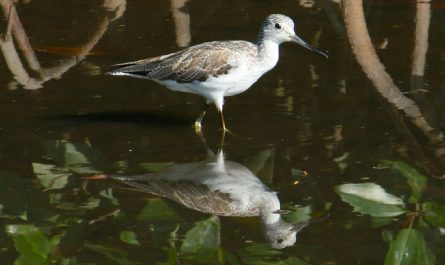
Thank you for writing and providing nice photos about Bombalai Hill. It really helps my research. Just have to write this comment because I truly appreciate your write-up as it is, as far as my research on the web goes, the most detailed writing on Bombalai Hill as a (dead) volcanic mountain in Malaysia.
Hi Sya, you are most welcome. It’s my pleasure to uncover the unique features of our attractions. 🙂